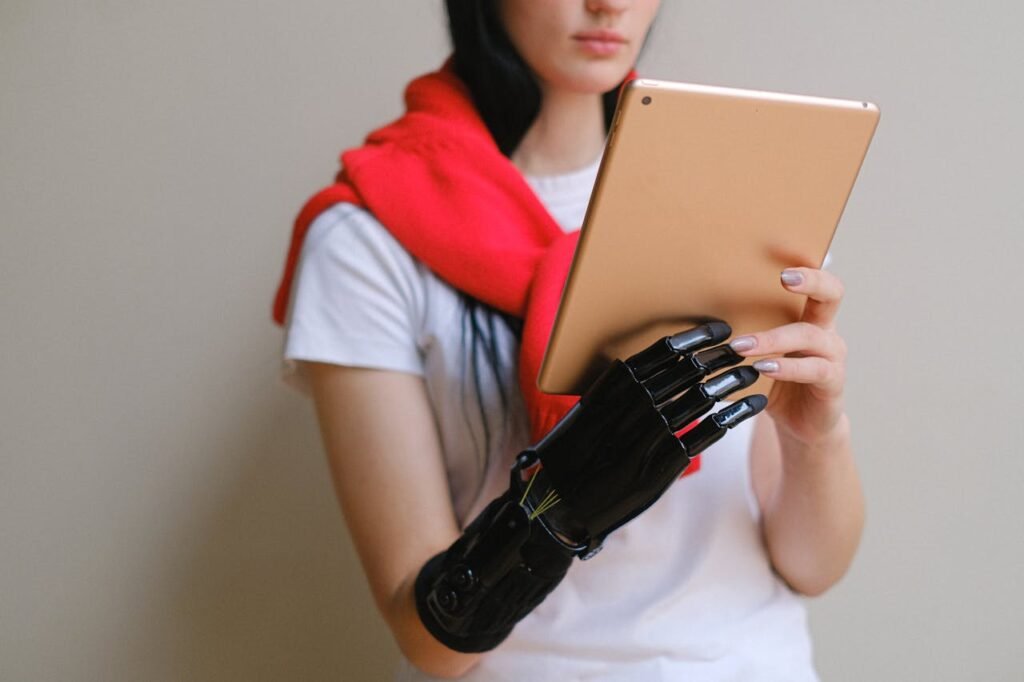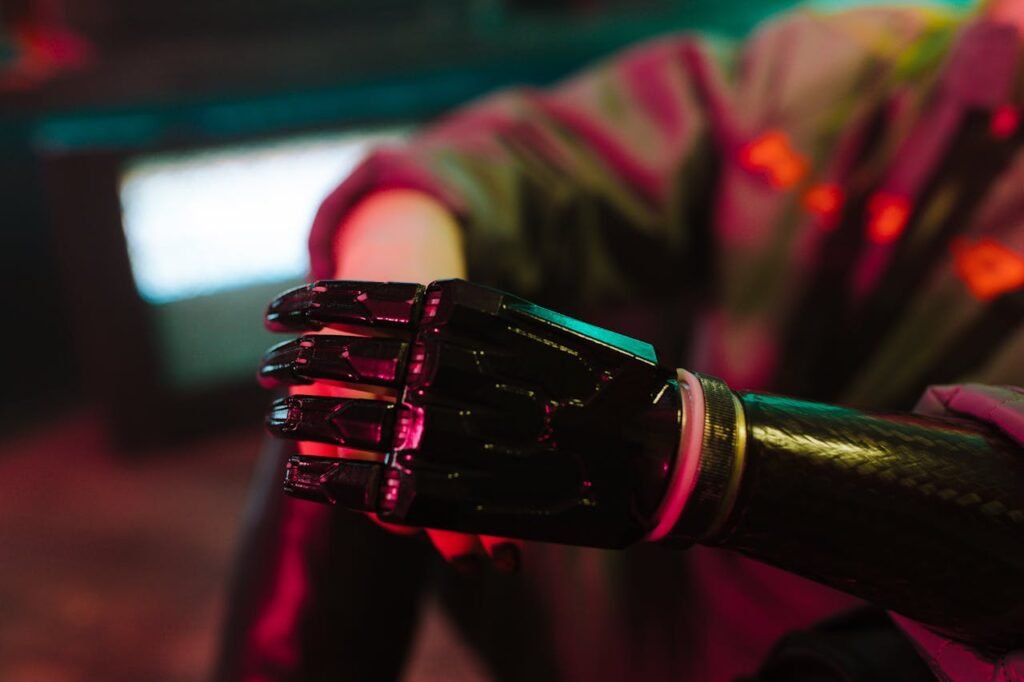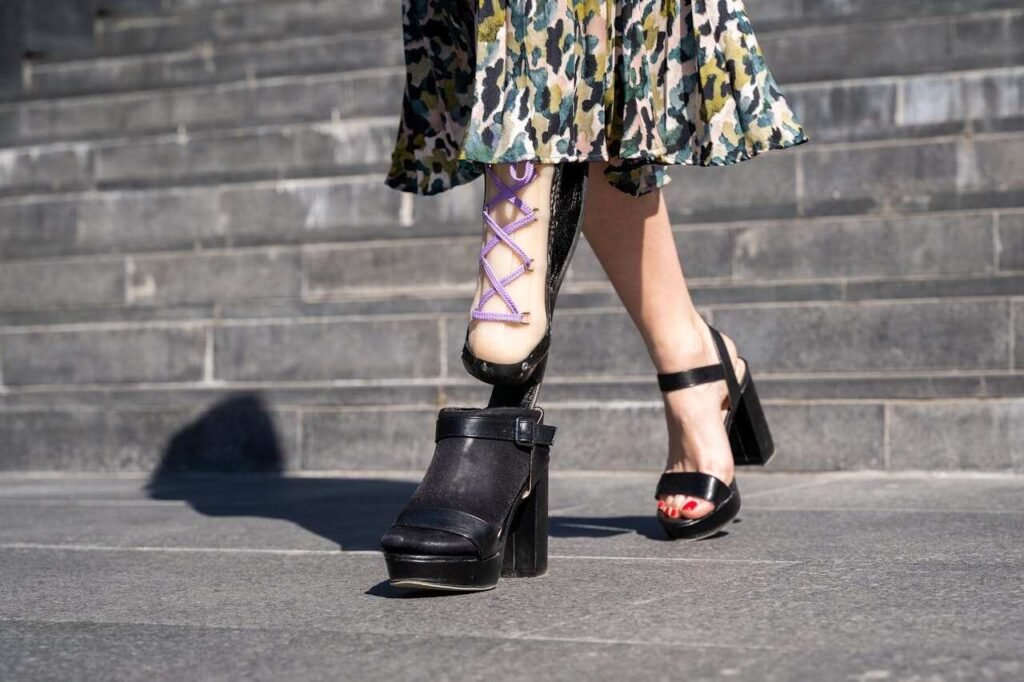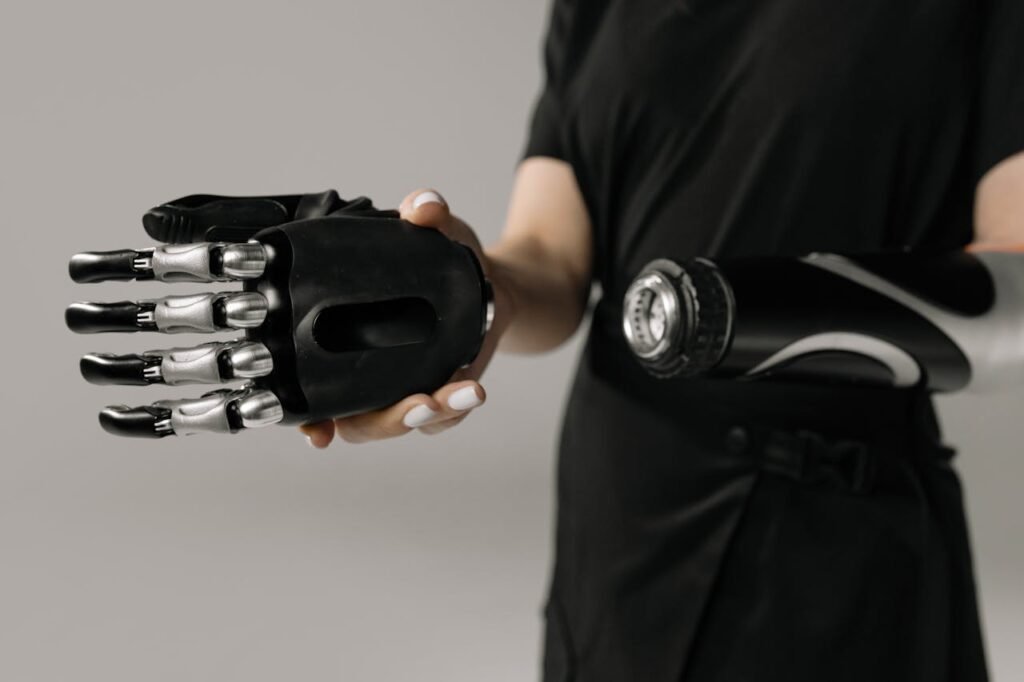Starting a new job is exciting. It’s a chance to grow, learn, and build your career. But for people who use upper-limb prosthetics—like bionic or mechanical hands—the workplace can also bring unique challenges. From using tools to typing on a computer or participating in team meetings, daily routines may need small adjustments.
In India, more companies today are realizing the importance of inclusion. They’re learning that accessibility is not just a legal requirement—it’s a sign of progress and respect. But even now, many employees don’t fully know their rights, or the kind of workplace accommodations they can request.
This article is designed to change that. It’s a complete, practical guide for anyone using upper-limb prosthetics who wants to understand their rights at work, the laws that protect them, and the simple changes employers can make to create fair, comfortable, and empowering environments.
At RoboBionics, we’ve met hundreds of professionals who wear prosthetic hands or arms. Some work in offices, some in factories, some in hospitals. All share one thing in common: they want to work with dignity, not pity. This guide brings together their experiences, along with India’s legal framework, and the best real-world advice on how to make workplaces more inclusive.
Let’s begin by understanding what the law says and how these rights can make everyday work smoother for people using prosthetics.
Understanding Workplace Rights in India
The Legal Framework

India has a strong foundation of laws that protect the rights of persons with disabilities. The most important one is the Rights of Persons with Disabilities Act, 2016 (RPwD Act). This law replaced the older 1995 Act and widened both definitions and protections.
Under this Act, disability is not just a medical condition—it includes long-term physical, mental, and sensory impairments that can hinder full participation in society. This includes people who use upper-limb prosthetics after limb loss or congenital conditions.
The law ensures equality and prohibits discrimination at every stage of employment. This means no one can be denied a job, promotion, or training opportunity because they use a prosthetic limb. Employers must also provide reasonable accommodations to make work accessible.
What “Reasonable Accommodation” Means
The term might sound formal, but it simply means small changes that help employees work effectively without unfair effort or stress. These can include adjustable desks, ergonomic keyboards, or modified tools.
In India, providing such accommodations is not a favor—it’s a right protected by law. The employer’s role is to create an environment where everyone can perform to their full potential.
For someone using a prosthetic hand, reasonable accommodation could mean allowing flexible work breaks for maintenance, a supportive chair design, or voice-to-text software if typing is tiring.
The RPwD Act also makes it clear that no one should lose their job due to disability acquired during employment. If someone needs a prosthetic after an accident, the company must help them return to work with suitable support.
The Role of the Chief Commissioner for Persons with Disabilities
If workplace discrimination occurs, the RPwD Act gives employees the right to file a complaint. The Chief Commissioner for Persons with Disabilities (CCPD) is responsible for investigating such cases.
This authority can direct employers to correct their practices and ensure compliance. Knowing this exists gives employees a sense of safety and confidence to stand up for fairness.
Many cases resolved under this system have led to improved policies across industries. Awareness is growing, but it still needs strong voices to keep pushing for inclusion.
Responsibilities of Employers
Creating an Inclusive Workplace
Employers are not only responsible for hiring people with prosthetics—they’re responsible for setting them up for success. True inclusion starts with awareness. Managers and coworkers should be educated about prosthetics, so they understand how they work and how to support without awkwardness.
Workplaces that hold short awareness sessions often see better teamwork. When people learn that prosthetics like the Grippy Bionic Hand respond to natural muscle signals and function smoothly, hesitation fades away.
An inclusive workplace is one where everyone feels valued. It’s not about sympathy, but understanding. Employers who take time to listen and adapt small things—like desk height or tool access—often see better productivity and morale.
Infrastructure and Accessibility
Accessibility is not limited to ramps or elevators. For someone with an upper-limb prosthetic, it also includes workspace design.
Desks should have enough space for movement. Door handles, switches, and drawers should be easy to operate with one or both hands. Adjustable furniture can make a huge difference.
In manufacturing or technical roles, customized tools or lighter materials can reduce strain. Employers can consult with prosthetic experts to design workstations that suit individual needs.
Even simple things like automatic dispensers in the cafeteria or touchless doors can improve comfort. Accessibility benefits everyone—not just people with prosthetics.
Job Modifications and Task Design
Every job has a set of core tasks. When an employee uses a prosthetic, a few of these might need adjustment. This doesn’t mean reducing responsibility—it means aligning the task with ability.
If a task involves repetitive manual motion, automation can help. In office work, adaptive keyboards or voice-command systems can improve typing speed. For creative roles, stylus pens designed for prosthetic grips can enhance accuracy.
Employers should have open conversations with their employees to identify which parts of the job feel challenging. Collaboration leads to solutions that work for both sides.
Training and Career Growth
Many people with prosthetics face barriers to career advancement because training modules are not designed with inclusion in mind. Employers must ensure that learning materials are accessible.
Workshops should provide equal participation opportunities. If the training involves manual tasks, demonstration videos can supplement physical practice. If software training is required, ensure assistive devices are compatible with the tools used.
Career growth depends on opportunity, not limitation. When employees using prosthetics get fair access to learning, they perform on par with anyone else.
Encouraging a Culture of Equality
An inclusive culture grows when leadership sets the tone. Company policies should clearly state zero tolerance for discrimination.
Celebrating diversity days, featuring inspiring employee stories, and recognizing achievements help normalize inclusion. When employees feel accepted as they are, they bring their best energy to work.
Managers should also be trained to communicate with empathy. Simple words of respect and understanding create powerful bonds that build long-term loyalty and trust.
Employee Rights and Empowerment
Right to Equal Opportunity
Everyone has the right to fair consideration for employment. Whether a person uses an upper-limb prosthetic or not, hiring decisions must be based on skills, not assumptions.
Employers cannot reject applications solely because of disability. In fact, Section 20 of the RPwD Act makes discrimination in public or private sector employment unlawful.
Job postings should also avoid biased language. Instead of saying “must have full physical fitness,” employers should focus on job-related requirements and be open to discussing accommodations.
Right to Accessible Work Environment
Once hired, employees have the right to work in a safe and accessible space. This includes equipment, layout, and technology that allow them to perform their duties comfortably.
If an employee faces obstacles, they can request modifications. These can be as small as rearranging tools or as detailed as changing the workstation setup. Employers must evaluate such requests seriously and respond in writing.
Accessibility is not about luxury—it’s about fairness. A person cannot be expected to perform at their best without the right tools and space.
Right to Privacy and Dignity
Every employee has the right to privacy, especially regarding their medical or prosthetic details. Employers must not share personal information without consent.
When discussing accommodations, conversations should happen respectfully and confidentially. No one should feel singled out or labeled because of their prosthetic.
Respect also means avoiding unnecessary questions about appearance or ability. Dignity grows in silence as much as in support.
Right to Non-Discrimination and Equal Pay
Equal work deserves equal pay. Using a prosthetic should never affect salary or benefits. Unfortunately, some employees still face subtle discrimination when it comes to appraisals or project assignments.
The RPwD Act clearly protects employees from any such unfair treatment. Performance reviews must be based on measurable outcomes, not physical differences.
Equal pay also builds motivation and self-worth. It tells employees that their contribution is valued for what they achieve, not for how they achieve it.
Right to Representation and Complaint
Every employee has the right to voice concerns through proper channels. Companies with more than twenty employees are required by law to appoint a liaison officer for disability inclusion.
If discrimination or lack of accommodation occurs, employees can file complaints with internal grievance cells. If unresolved, they can approach the State or Chief Commissioner for Persons with Disabilities.
These systems exist to ensure that fairness is not optional—it’s mandatory. Knowing this empowers individuals to stand firm for their rights.
Practical Workplace Accommodations
Small Adjustments That Make a Big Difference

Workplace accommodations are often simpler than people imagine. For someone using an upper-limb prosthetic, even minor changes in layout, design, or workflow can greatly improve comfort and productivity.
Ergonomic desks with rounded edges help in preventing pressure when resting the prosthetic arm. Chairs with adjustable armrests give better balance and reduce shoulder fatigue. Keeping essential items like phones, files, or stationery within easy reach saves unnecessary stretching.
Employers can install motion-sensor doors or push-button handles to make movement around the office easier. These small steps build an environment that encourages independence.
For employees, communicating openly about what works and what doesn’t is key. Most managers are willing to help once they understand the practical side of daily use. The goal is not special treatment—it’s equal opportunity.
Accommodations for Digital and Office Work
Typing, mouse control, and document handling are daily tasks for most office employees. Using a prosthetic may make some of these actions slower at first, but the right setup can change that quickly.
Larger keyboards with wider key spacing help improve accuracy. Touchscreen devices or stylus pens with adaptive grips can also reduce effort. Many prosthetic users prefer using voice-recognition software for drafting emails or reports—it’s efficient and reduces strain during long work hours.
Cable management systems under desks can prevent accidental snags on prosthetics. Keeping surfaces clutter-free ensures smooth movement and comfort.
Digital accessibility tools such as speech-to-text, screen readers, and auto-formatting software also help save time. Employees can request installation of these tools through the HR or IT team under the RPwD Act.
Accommodations in Industrial and Technical Roles
For jobs involving machinery or technical tools, safety and adaptability are crucial. Workers using upper-limb prosthetics can perform effectively with customized tools and task modifications.
Employers can consult prosthetic technicians to design grips or attachments suitable for specific tasks. Adjustable workbenches and lighter tool variants reduce fatigue. Clear safety training for colleagues ensures smooth teamwork and awareness.
Some prosthetic devices like Grippy allow precise control and strong grip force, enabling users to hold tools or manage delicate materials confidently. In such environments, consistent maintenance of both prosthetic and equipment ensures safe and steady performance.
Rotating tasks to prevent muscle fatigue and providing rest intervals for prosthetic adjustments are also part of good ergonomic practice.
Accommodations for Communication and Collaboration
Teamwork thrives on clear communication. Meetings, group projects, and presentations can be easier with a few thoughtful steps.
For example, if an employee finds writing notes difficult, recording meeting minutes digitally or using shared online documents can help. Providing adaptive presentation clickers or wireless tools ensures equal participation during discussions.
In hybrid work environments, using voice or gesture controls during video meetings can replace manual camera handling. These are small, modern solutions that increase inclusion without extra effort.
Employers should encourage coworkers to see these accommodations as normal—not special. The focus should always be on collaboration and outcomes, not the method of participation.
Integrating Technology and Innovation
The Role of Advanced Prosthetics
Technology has transformed the experience of using prosthetics. Devices like the Grippy Bionic Hand use myoelectric signals—natural electrical impulses from muscles—to control movement. This means users can perform everyday office tasks with greater precision and speed.
The Sense of Touch feature in Grippy adds another layer of comfort. It gives tactile feedback, allowing users to sense pressure when holding objects. This is useful for delicate actions like typing, shaking hands, or handling documents.
When workplaces support such innovations, employees can blend seamlessly into their roles. The focus shifts from limitation to capability.
Employers can also partner with prosthetic manufacturers for training programs. These sessions help both employees and HR teams understand the functionality, care, and lifespan of modern prosthetics.
Adapting Workstations for Myoelectric Devices
Myoelectric prosthetics function best in clean, organized spaces. Workstations should have easy access to power outlets for charging. A small charging dock or backup battery station near the desk ensures that the prosthetic stays ready throughout the day.
For long meetings or travel, carrying a portable charger is practical. Many modern prosthetics last 8–10 hours on a single charge, but habits like charging during lunch breaks keep things worry-free.
Workstations can include cushioned mats or pads where the prosthetic arm rests during idle moments. This reduces wear and improves comfort. Over time, these adjustments become part of natural office ergonomics.
Remote Work and Hybrid Models
After the pandemic, remote work became a normal part of corporate life. For employees using upper-limb prosthetics, it brought both benefits and new challenges.
Working from home offers flexibility. Employees can adjust their environment—desk height, lighting, or seating—to match their needs perfectly. They can take short breaks for adjustments without disrupting office schedules.
However, it also requires strong communication tools. Reliable Wi-Fi, noise-free headphones, and accessible digital platforms like Zoom or Microsoft Teams are essential. Employers must ensure that work-from-home policies include provisions for technical support and equipment reimbursement.
Hybrid models, where employees split time between home and office, offer the best of both worlds. They allow flexibility while maintaining teamwork and professional engagement.
Using Assistive Digital Tools
Technology today offers many assistive applications for prosthetic users. Speech-to-text systems like Google Voice Typing or Dragon NaturallySpeaking convert spoken words into text instantly.
Task organizers such as Trello or Notion help structure work visually, reducing the need for frequent typing. Built-in accessibility settings on computers—like sticky keys, predictive text, and touchpad gestures—can also make daily work smoother.
Employers should encourage IT departments to enable such features by default. This shows awareness and saves employees the discomfort of requesting them individually.
These tools may look small, but together they make work faster, smoother, and stress-free for prosthetic users.
Creating Awareness and Changing Mindsets
Educating the Workforce

True inclusion starts with understanding. Many colleagues simply don’t know how prosthetics work or how to interact respectfully. Short awareness sessions can change that completely.
Employers can organize orientation programs that explain what prosthetics do, what support users may need, and what they definitely don’t need—like pity or extra attention. When people learn, they become comfortable, and inclusion becomes natural.
Colleagues should understand that prosthetic users prefer independence. Offering help is good, but asking before acting shows respect. Small courtesies like this make workplaces more human.
Education also removes fear. Many managers hesitate to hire prosthetic users because they’re unsure of accommodations. Awareness helps them realize that inclusion is practical and beneficial for everyone.
Promoting Equal Representation
Representation changes perception. When companies feature employees with prosthetics in training materials, events, or internal campaigns, it sends a message: ability comes in many forms.
Encouraging people with prosthetics to take leadership or client-facing roles shows that inclusion is not symbolic—it’s active. Employees gain confidence when they see themselves reflected in higher positions.
Diversity is not only moral; it’s strategic. Inclusive teams often perform better because they bring varied perspectives and problem-solving styles. For companies, it’s a mark of progress and empathy.
Reducing Stigma in the Workplace
Despite growing awareness, some stigma still lingers. People may assume prosthetic users can’t handle physical work or fast-paced environments. These assumptions quietly limit opportunity.
Breaking such stigma requires honest communication. When prosthetic users share their experiences and achievements, misconceptions fade. Team leaders play an important role by emphasizing ability over limitation.
Workplaces that normalize prosthetics through visibility, conversation, and policy make stigma disappear. When inclusion becomes a routine part of culture, acceptance follows naturally.
Building Allyship Among Coworkers
An inclusive environment isn’t built by policies alone—it’s built by people. Coworkers who listen, encourage, and include others are the true allies of progress.
Employees can support each other by respecting personal space, being patient during new adjustments, and celebrating shared goals. Inclusion works best when it feels genuine, not forced.
Simple gestures—inviting someone for coffee, involving them in discussions, or offering to brainstorm solutions together—create bonds that make workplaces stronger.
Health, Safety, and Well-Being
Creating Safe Work Environments
Safety is a key part of any workplace, and for people using upper-limb prosthetics, it needs a little extra attention. Safety doesn’t mean restrictions—it means preparation. Every employee should be able to move, work, and participate without risk or discomfort.
Workstations should have stable surfaces that allow free arm movement. Electrical cords, sharp edges, or loose carpets should be avoided. For those working in factories or labs, protective gear like gloves or sleeves designed for prosthetic arms can reduce wear and tear while ensuring safety.
Employers should conduct regular safety audits that include feedback from prosthetic users. Their perspective helps identify risks others might not notice.
Safety drills must also account for employees with prosthetics. In emergencies like fire or evacuation, clear routes and assistive support systems are crucial. Everyone should know the plan so that no one feels left behind or confused during such moments.
Ergonomic Health and Fatigue Prevention
Using a prosthetic limb can sometimes lead to mild strain in the shoulder, neck, or back if posture or desk setup isn’t ideal. Ergonomic health becomes a daily necessity, not an occasional concern.
Companies can bring in occupational therapists or ergonomics experts to assess workspaces. A few millimeters of desk adjustment or seat angle change can reduce discomfort dramatically.
Employees can practice simple stretches during short breaks. Rolling shoulders, flexing fingers, or relaxing the neck for a minute helps maintain blood flow and prevents fatigue.
Employers should also encourage regular rest breaks. Working continuously without a pause can increase strain, especially for myoelectric prosthetic users whose muscles control electronic sensors. Taking two or three minutes every hour to rest the limb ensures long-term comfort.
Supporting Mental and Emotional Health
Emotional well-being is as important as physical health. Adjusting to workplace dynamics with a prosthetic can be emotionally tiring, especially when people unintentionally stare or make assumptions.
Employers should cultivate a culture where kindness is part of professionalism. Peer support groups or open discussions about inclusion help people express their challenges safely.
For employees, acknowledging emotions without guilt is healthy. It’s natural to feel frustrated on tough days or proud on good ones. Talking with friends, counselors, or colleagues who understand can bring balance.
Workplace inclusion programs should address emotional health alongside physical accessibility. When mental well-being is prioritized, employees feel secure, focused, and valued.
Promoting Long-Term Health
Prosthetic maintenance and body health go hand in hand. Regular cleaning of the prosthetic socket, proper skincare for the residual limb, and ensuring correct fit are part of daily self-care.
Companies can allow short, flexible breaks for adjustment or cleaning without affecting productivity expectations. This builds trust and reduces health risks.
Regular follow-ups with prosthetists also help identify issues early—like socket pressure or signal sensitivity in myoelectric limbs. Employers supporting medical leave for check-ups contribute to long-term workforce stability and satisfaction.
Real Stories and Practical Inspiration
The Story of Anil – The Engineer Who Built His Future
Anil lost his right hand in an accident during college. When he joined a manufacturing firm in Pune, he worried about fitting in. But his company worked with RoboBionics to understand his needs and adjusted his workstation.
Using the Grippy Bionic Hand, Anil learned to handle measuring instruments, type reports, and even assemble small components with precision. Within months, his confidence grew. Today, he supervises a production line and mentors others with limb differences.
His story shows that inclusion is not theory—it’s action. With the right prosthetic and workplace support, ability shines brighter than limitation.
The Story of Ayesha – The Designer Who Never Gave Up
Ayesha is a graphic designer in Mumbai. After losing her hand in an accident, she thought her design career was over. Then she discovered adaptive stylus tools that worked seamlessly with her Grippy prosthetic.
Her company provided her with an ergonomic workstation, a voice-enabled computer, and software shortcuts tailored to her workflow. Now she designs faster than before and often jokes that her prosthetic gives her “extra precision.”
She also leads her company’s inclusion committee, guiding HR on how to onboard more employees with different abilities. Her success shows that innovation, empathy, and courage go hand in hand.
The Story of Ramesh – From Factory Worker to Trainer
Ramesh worked in a textile plant in Tamil Nadu. After an injury, he received a below-elbow prosthetic and thought he’d have to retire. But his employer insisted on retraining him.
With practice, Ramesh mastered machine operations again and even developed new safety techniques for workers using prosthetics. The company later promoted him to a training role.
He now teaches others how to adapt machines safely for prosthetic users. His journey proves that support and skill-building can turn loss into leadership.
Collaboration Between Employers and Employees
Open Communication Builds Trust

Inclusion thrives on conversation. Employees using prosthetics should feel comfortable sharing their experiences without fear of judgment. Employers, in turn, must listen actively and respond thoughtfully.
It’s important for both sides to see accommodation as teamwork. The employee brings experience, while the employer provides resources. When they collaborate, adjustments become efficient and meaningful.
Regular one-on-one meetings help track comfort levels and identify potential improvements. These discussions strengthen trust and reduce misunderstandings.
Setting Realistic Goals and Expectations
Workplace success comes from clear expectations. Managers should focus on outcomes, not methods. An employee using a prosthetic may perform tasks differently but can still achieve the same results.
Goal setting should respect each person’s strengths. Flexibility in work style doesn’t mean leniency—it means fairness. When companies focus on quality and efficiency, rather than traditional methods, everyone benefits.
Transparent communication about roles, timelines, and evaluations keeps relationships healthy and professional.
Encouraging Feedback and Continuous Learning
Feedback helps inclusion evolve. Employees using prosthetics can provide valuable insights into accessibility gaps or improvements. Employers should welcome this input and act promptly.
Similarly, employees can request feedback to grow in their roles. Constructive conversations strengthen self-esteem and help refine skills.
Continuous learning also applies to technology. As prosthetic devices advance, companies can arrange short training sessions to keep employees updated. This ensures they get the best from their tools and stay future-ready.
Recognizing Effort and Achievement
Recognition is a powerful motivator. When companies celebrate achievements of employees with prosthetics, it sends a message that effort matters more than circumstance.
Awards, appreciation letters, or public acknowledgments reinforce that inclusion is part of company values. It also inspires others to believe that limitations don’t define success.
When employees feel seen, their productivity and loyalty rise naturally. Inclusion, when genuine, always pays back in performance.
Building an Inclusive Future
Innovation with Heart
Inclusion is not just about laws and infrastructure—it’s about empathy. Every company has the power to design a future where ability, not disability, defines a person’s value.
As technology grows, prosthetics like the Grippy Bionic Hand are becoming lighter, smarter, and more intuitive. Features such as tactile feedback and multiple grip patterns allow users to perform tasks that once seemed impossible.
Employers who invest in such innovations and train their teams to adapt are not only supporting employees—they’re future-proofing their business.
The Role of Policy and Government Support
Government initiatives like the Accessible India Campaign (Sugamya Bharat Abhiyan) are encouraging organizations to make workplaces inclusive. Tax benefits and incentives are also available for companies hiring persons with disabilities.
Awareness of these schemes can help businesses take meaningful steps. HR departments should stay updated with guidelines from the Ministry of Social Justice and Empowerment and collaborate with local disability offices.
Compliance is not just about avoiding penalties—it’s about participating in national progress.
Creating Opportunities for All
Every individual with a prosthetic hand or limb has skills, dreams, and ambitions. What they need are open doors and understanding workplaces.
Colleges, job fairs, and placement agencies should partner with organizations like RoboBionics to spread awareness and showcase real talent. When society stops seeing prosthetics as a barrier, true equality begins.
Inclusion should be part of every conversation—during recruitment, promotions, training, and even social events. It’s not a one-time project; it’s a continuous mindset.
The Way Forward
As India grows, its workplaces must reflect diversity in every form. Prosthetics are no longer symbols of loss—they’re signs of strength, technology, and hope.
RoboBionics has seen firsthand how the right prosthetic transforms lives. With devices like Grippy, people regain control, confidence, and independence. They write, work, create, and live fully again.
If you or your organization are ready to build an inclusive environment or want to understand how prosthetics can empower your team, schedule a free demo at www.robobionics.in/bookdemo.
Together, we can create workplaces where every hand—natural or bionic—has equal power to build, lead, and inspire.



